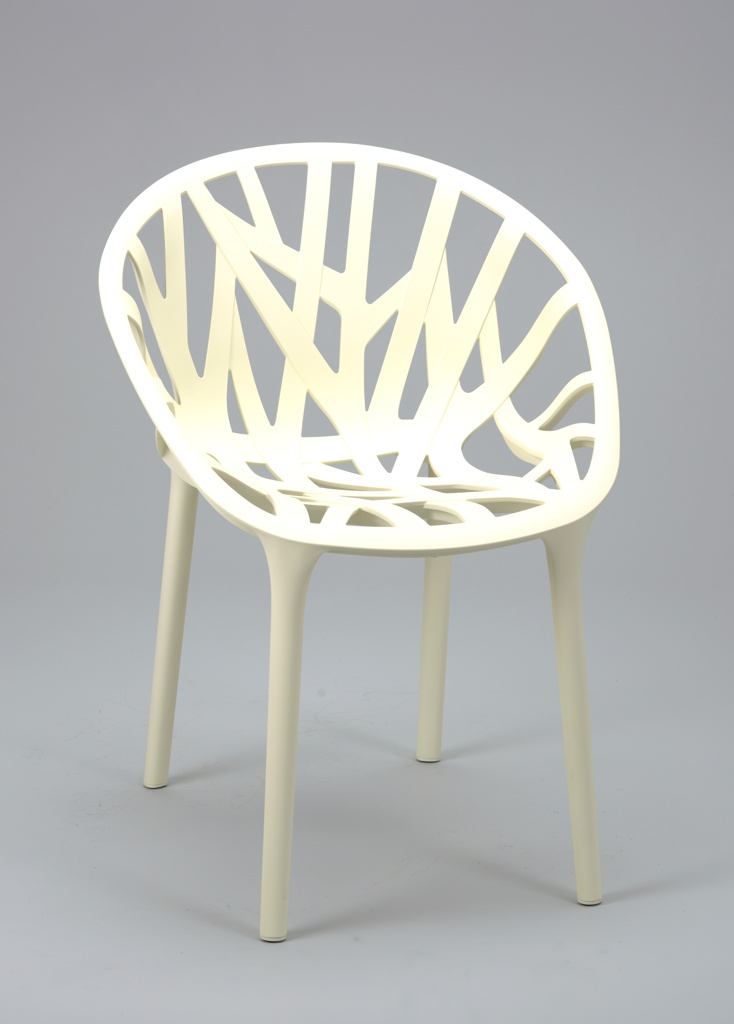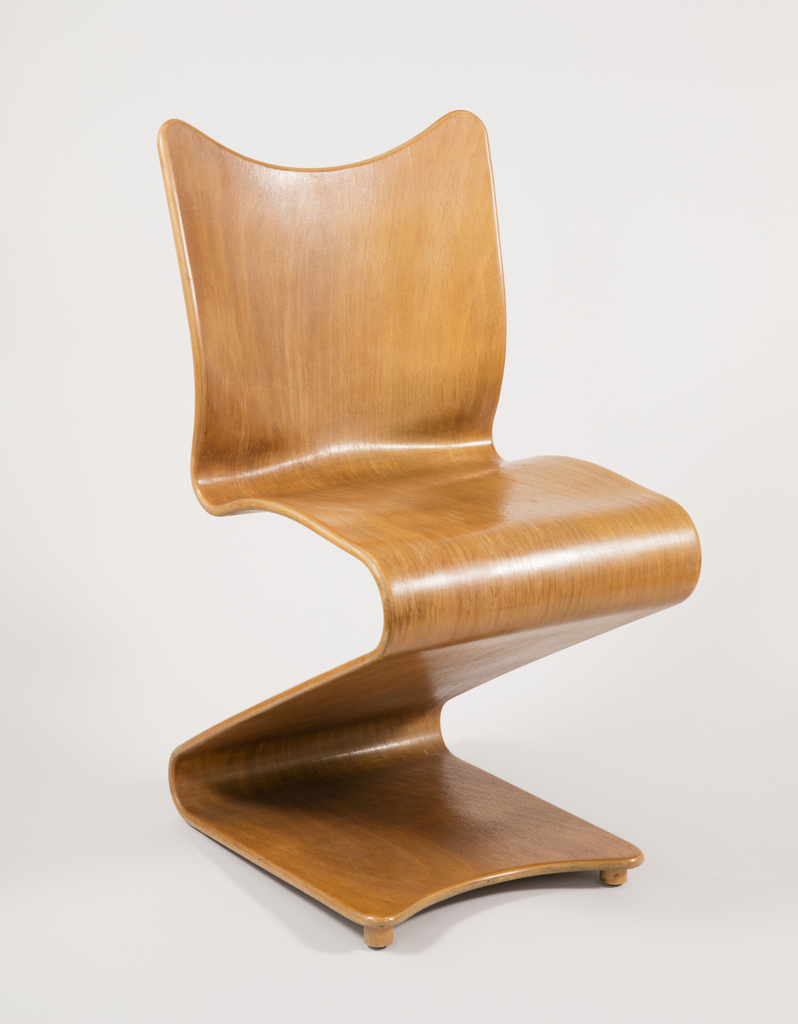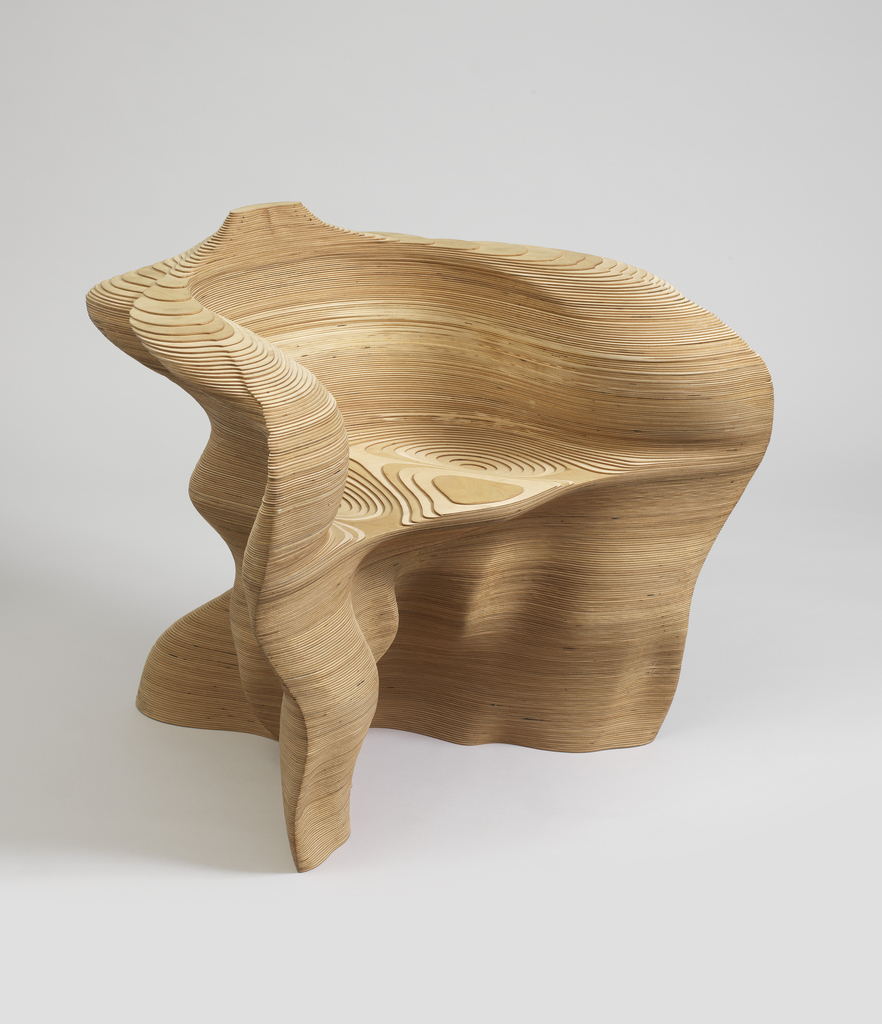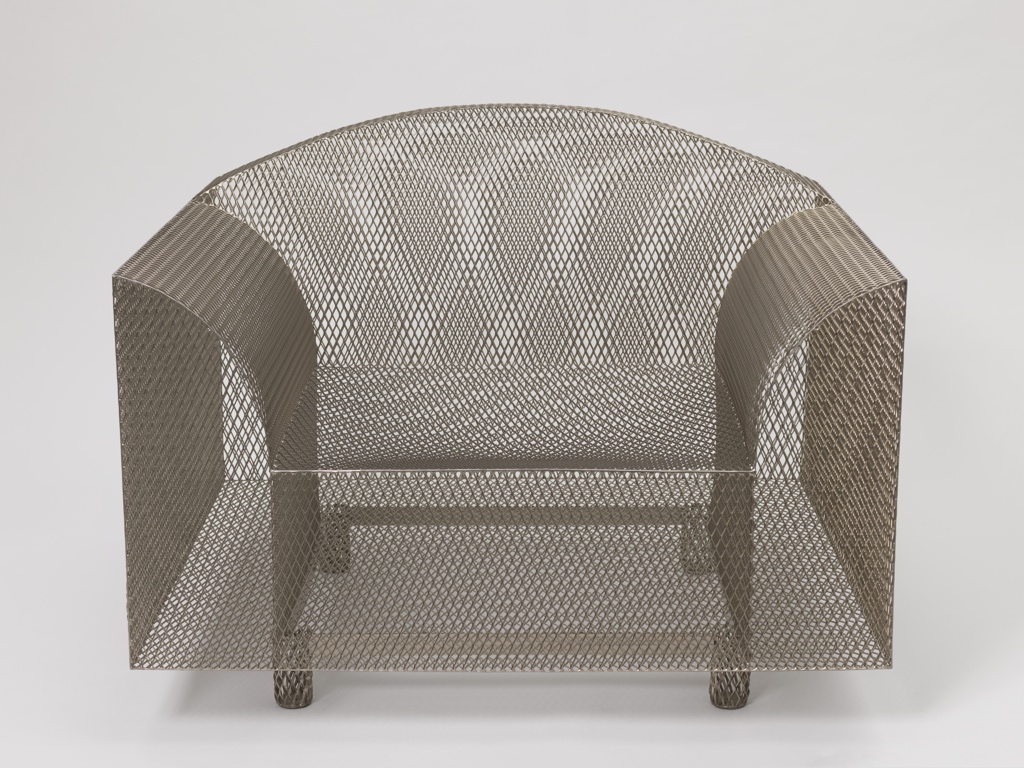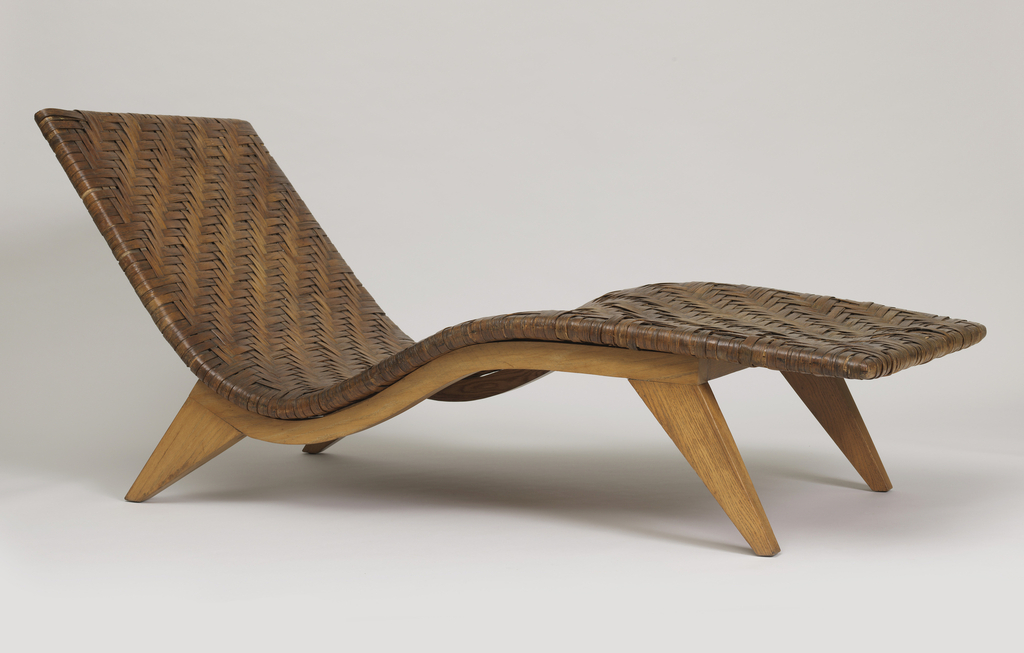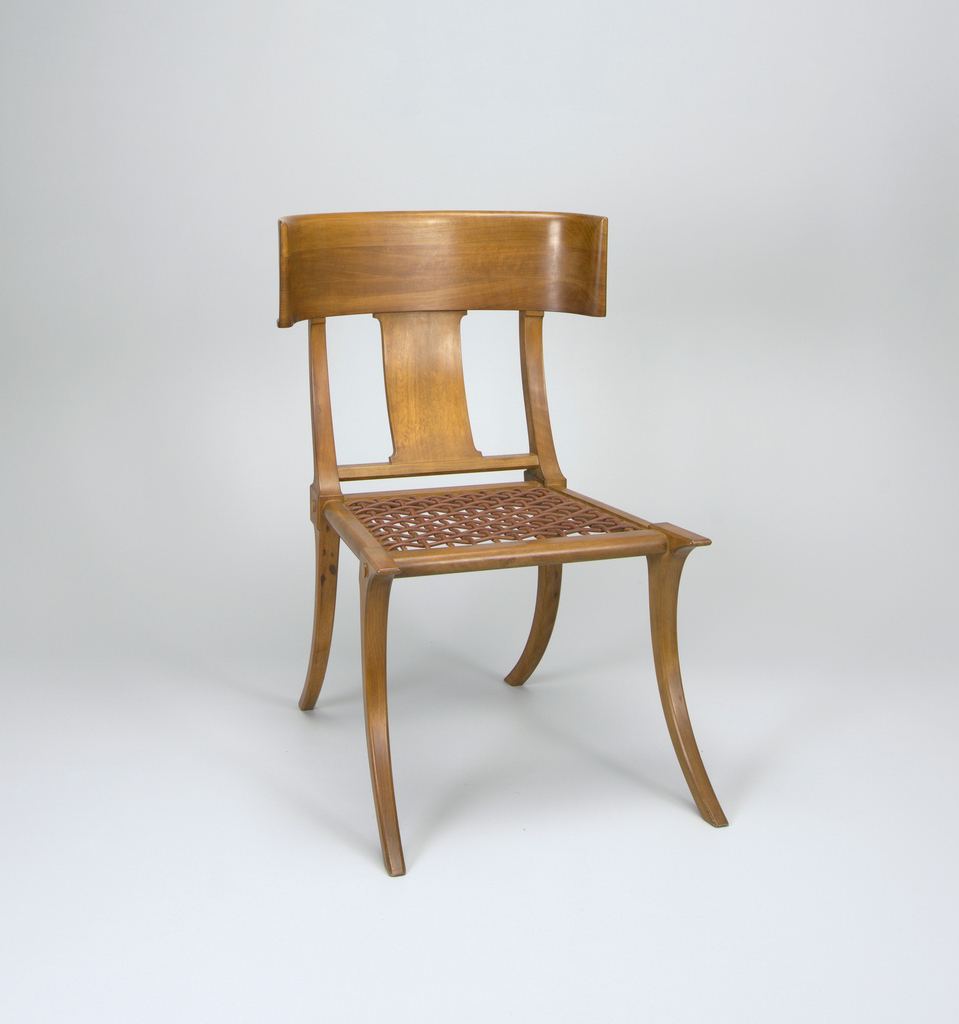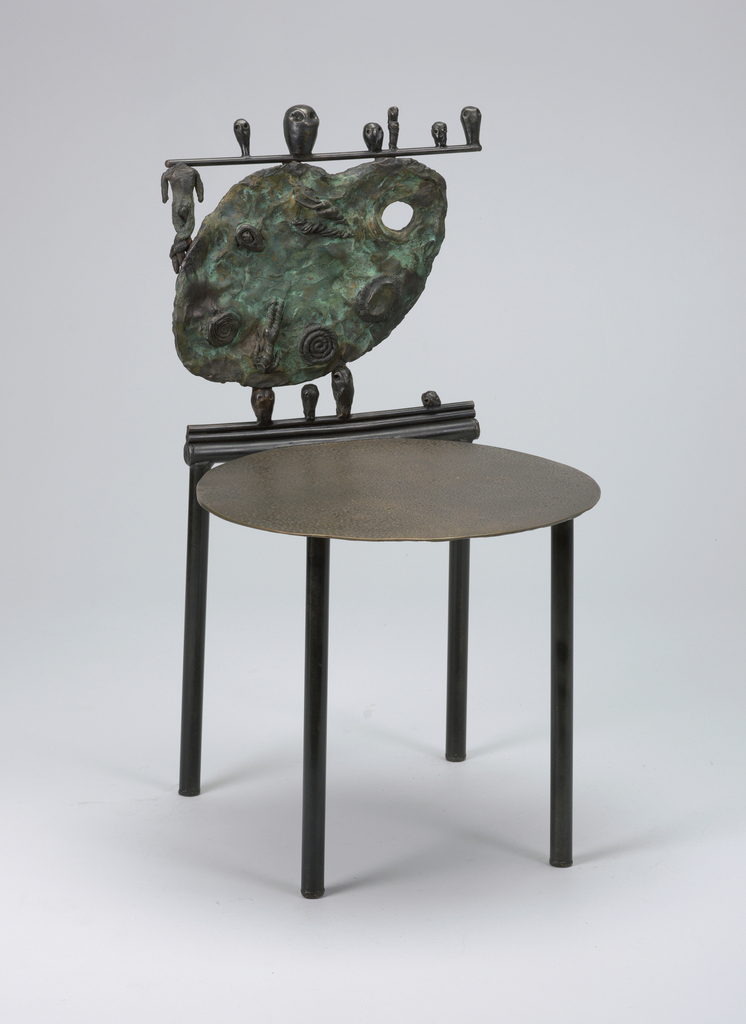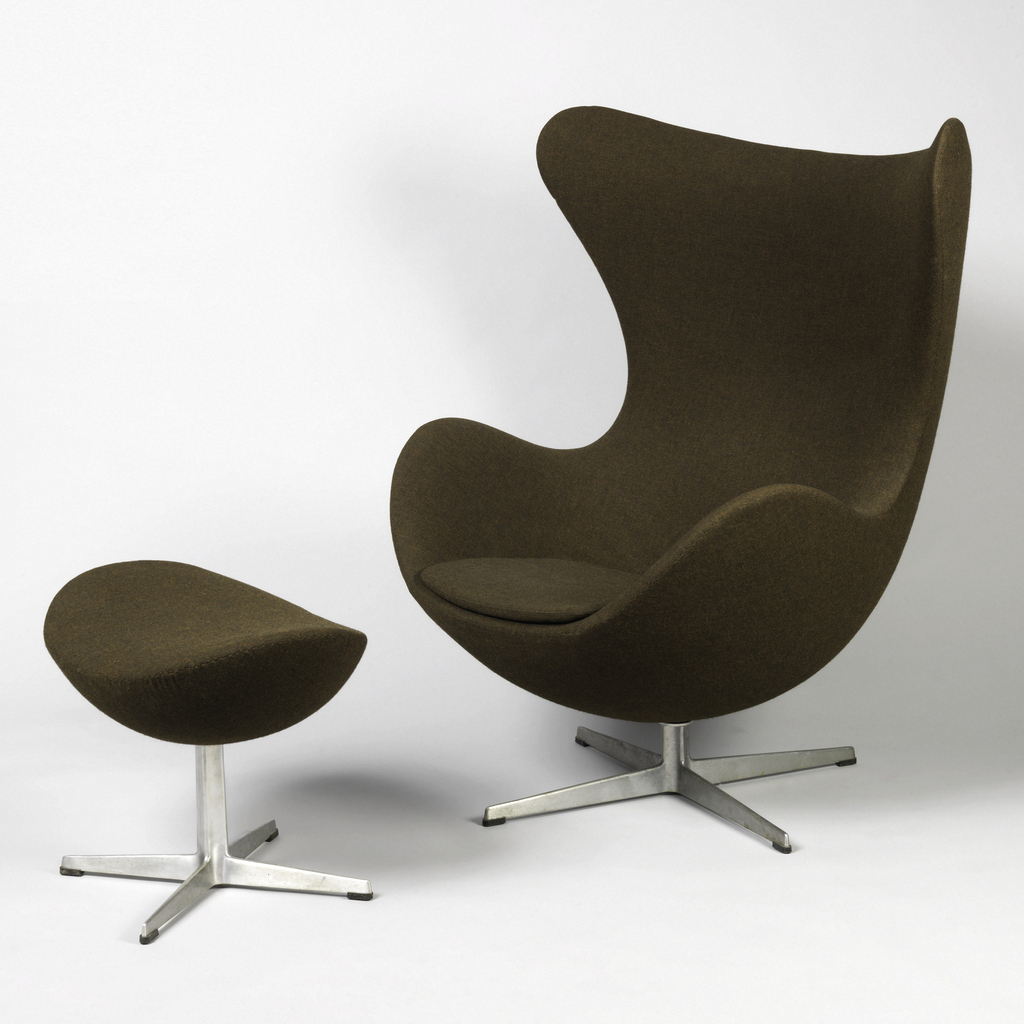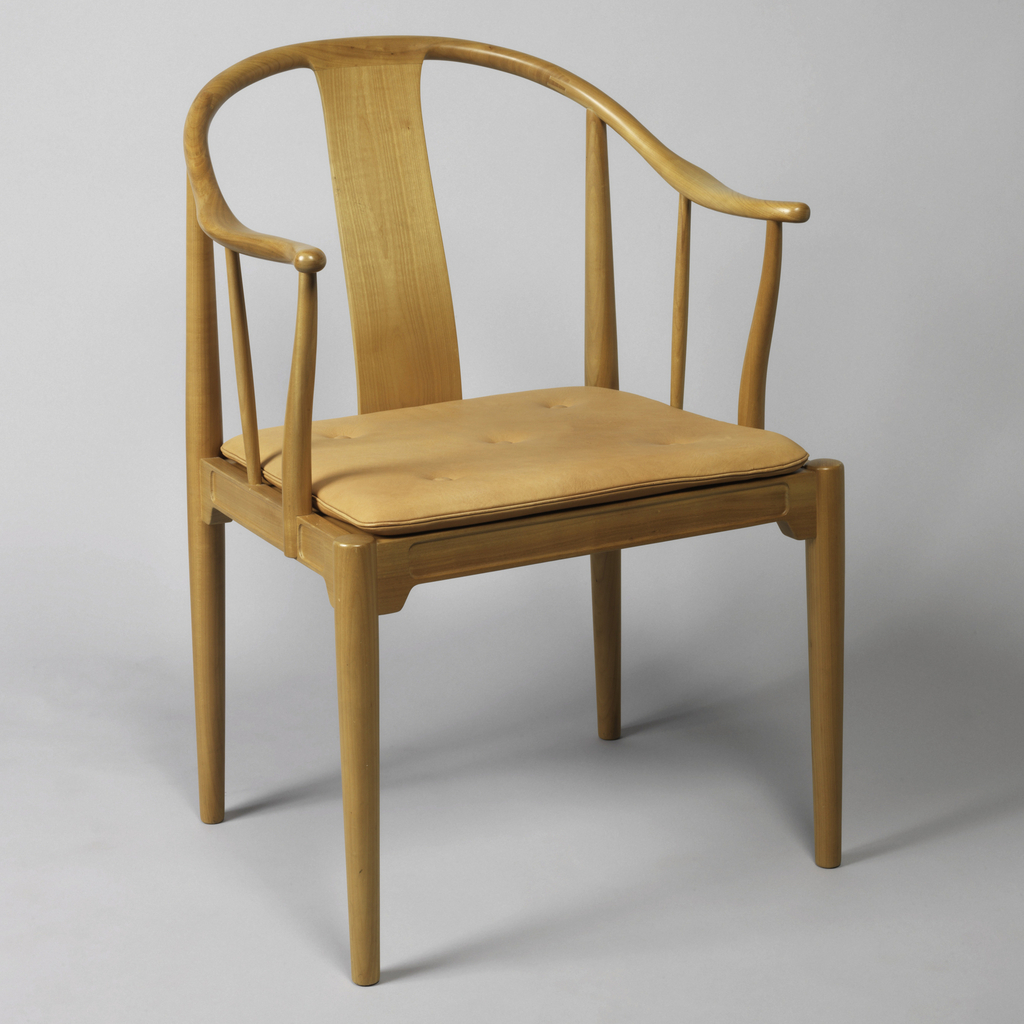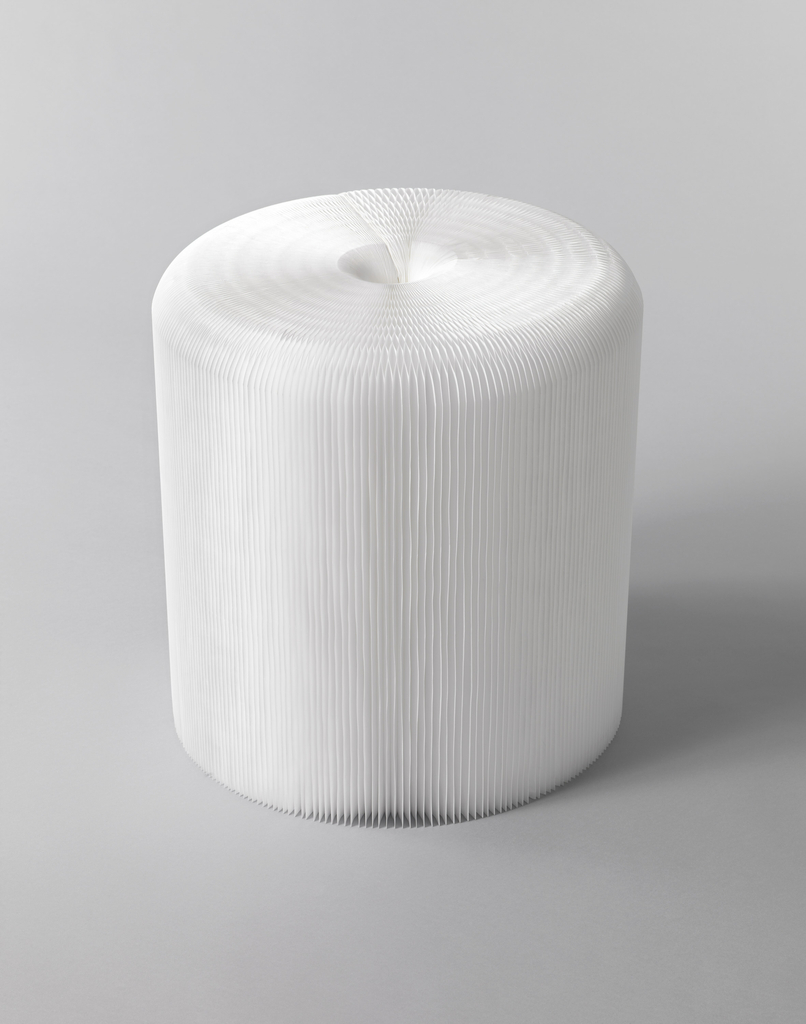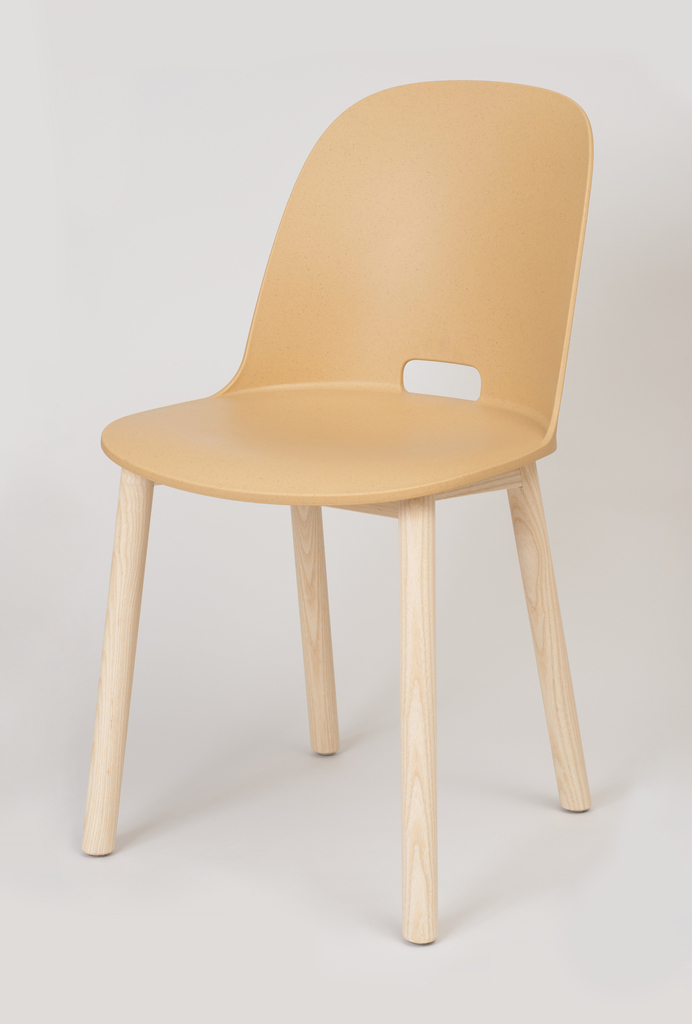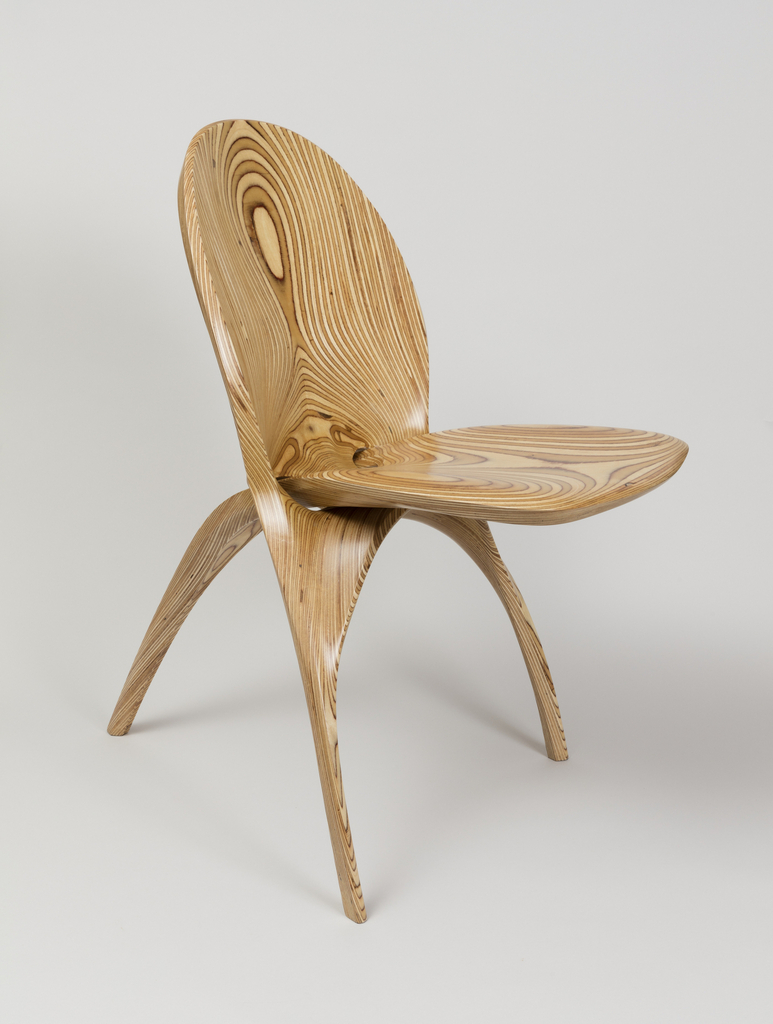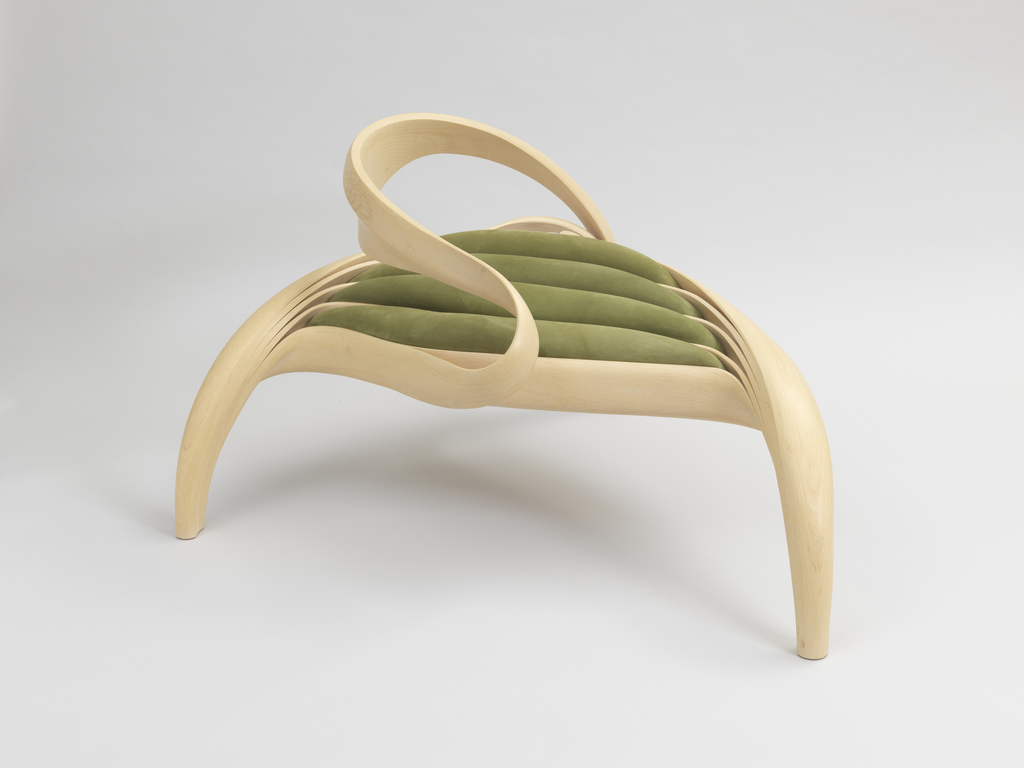In the mid-2000s, designers (and brothers) Ronan and Erwan Bouroullec, came up with the concept of a chair that would “sprout up like a plant…with its branches gently curving up to form the seat and back.” They also took inspiration from historical seating, such as English cast iron garden benches, American chairs in the rustic...
Probably best known for his one-piece injection-molded plastic design, the Panton ‘S’ chair of 1960, designer Verner Panton was sketching ideas for one-piece, self-supporting, cantilevered stackable chairs made of a single material as early as 1955. Panton’s 275 S chair is the first one-piece cantilevered chair made of molded plywood. It was among his entries in the 1956...
Danish designer Matthias Bengtsson designed the Slice chair in 1998, while a student at the Royal College of Art in London. Exploring the relationship between high tech manufacturing methods and the hand-made, his creative process combined cutting-edge production techniques with craft. Bengtsson first modeled the curves and contours of this sculptural form by hand in...
In his How High the Moon chair, designer Shiro Kuramata utilizes an industrial material, steel mesh, to give a contemporary interpretation to the traditional club chair. The shape and proportions are based on an established Western form—a bulky, deeply upholstered easy chair with a low back and deep arms—but here, Kuramata’s use of an unexpected...
Edward Durell Stone, born in Arkansas in 1902, was an important proponent of the International Style in the United States, reconciling its crisp geometry and functionalism with American popular tastes. In the 1940s, however, his formalist aesthetic underwent a transformation following a cross-country tour that included visits to Frank Lloyd Wright’s Taliesin and Yellowstone National...
The concept of “eternal” style is a bit of an oxymoron, after all, many of today’s producers and designers roll out new and improved models on a regular basis. Thinking about cars, phones, and electronics it is easy to fall prey to the idea that everything is expendable and that each new item is better...
In 1946, the twenty year old artist Ruth Asawa entered the renowned, experimental Black Mountain College, where she studied for three years under mentors such as Josef Albers, Merce Cunningham and Buckminster Fuller. Born in California to Japanese immigrants, Asawa spent her childhood working on her family’s farm, until 1942, when the entire Asawa family...
In celebration of Women’s History Month, March Object of the Day posts highlight women designers in the collection. The Oka chair, by Michele Oka Doner, is both a utilitarian furnishing and a highly detailed sculptural piece. The chair’s seat is a flat textured disk which rests on straight, unadorned legs. The back, where all the...
The Danish designer Arne Jacobsen believed in the artist’s complete control over a project. Though originally trained as an architect, he had a hand in all aspects of his buildings’ designs, including the interiors. His works might be considered examples of Gesamtkunstwerk, or the total work of art, because of his individual and obsessive control...
The Chinese Chair, designed by Hans J. Wegner and manufactured by Fritz Hansen Inc. of Denmark, represents a piece of Western furniture inspired by the design aesthetic of Eastern culture. Capturing the nature of Chinese furniture design, the chair features soft, sloping, and rounded armrests, giving the shape an organic quality. Made in cherry wood,...
The softseating stool is a collapsible form made of white, paper-thin honeycombed polyethylene sheets joined between two white cardboard panels that connect with magnets to form a cylindrical shape. When fanned outward and secured, the polyethylene sheets are sturdy enough to support weight, yet remain comfortable to the user. The stool is portable, lightweight, and...
The Alfi chair is the product of a 2015 collaboration between British furniture-maker Jasper Morrison and American manufacturer Emeco. The chair’s simplicity expresses Morrison’s concept of “Super Normal” design, whereby objects are significant because of their everyday usefulness. The chair’s sturdy stance is in line with Emeco’s history as a manufacturer that prides itself in...
Ammar Kalo practices architecture and industrial design at his namesake studio in Sharjah, United Arab Emirates. His work ranges from architecture, interior design to furniture. The Stratum Chair’s concept and appearance were driven by his desires to “express materiality” and to take advantage of new fabrication technologies. Kalo laminated plywood and CNC milled a complex path...
The Enignum Free Form Chair by Joseph Walsh curves, swirls and ripples in a manner that is reminiscent of furniture from the Art Nouveau period, yet it is contemporary in its overall aesthetic. Joseph Walsh, a self-taught designer and builder, started working with wood at the age of eight, and honed both his woodworking skill...
Hans J. Wegner was a pioneer in modern Danish design in the 1950s and 1960s. Having designed more than 500 chairs throughout his career, with 100 of them being mass-produced, he has been affectionately known within the design world as the “Master of the Chair”. His ingenious use of natural materials, in particular his admiration...
